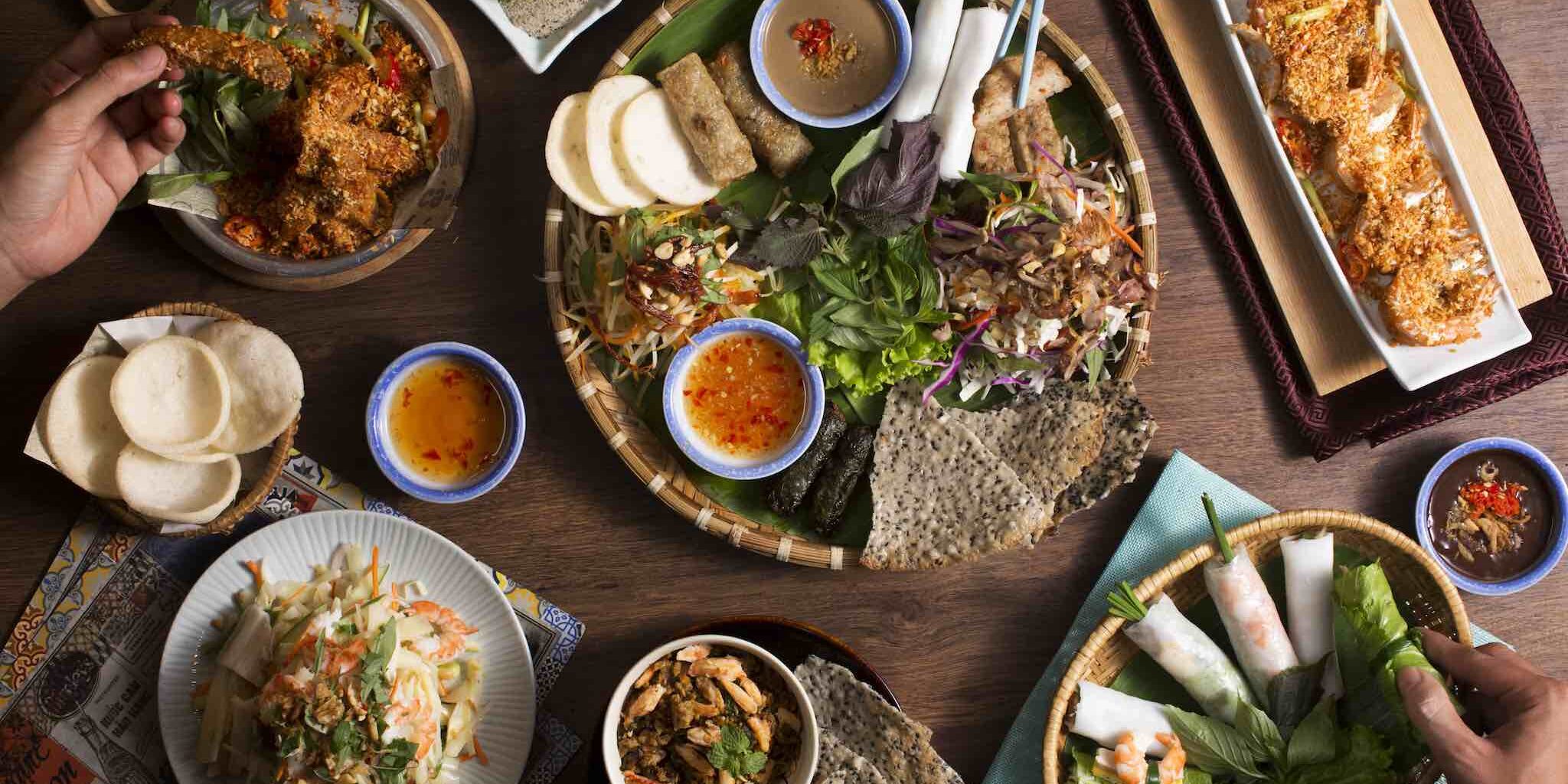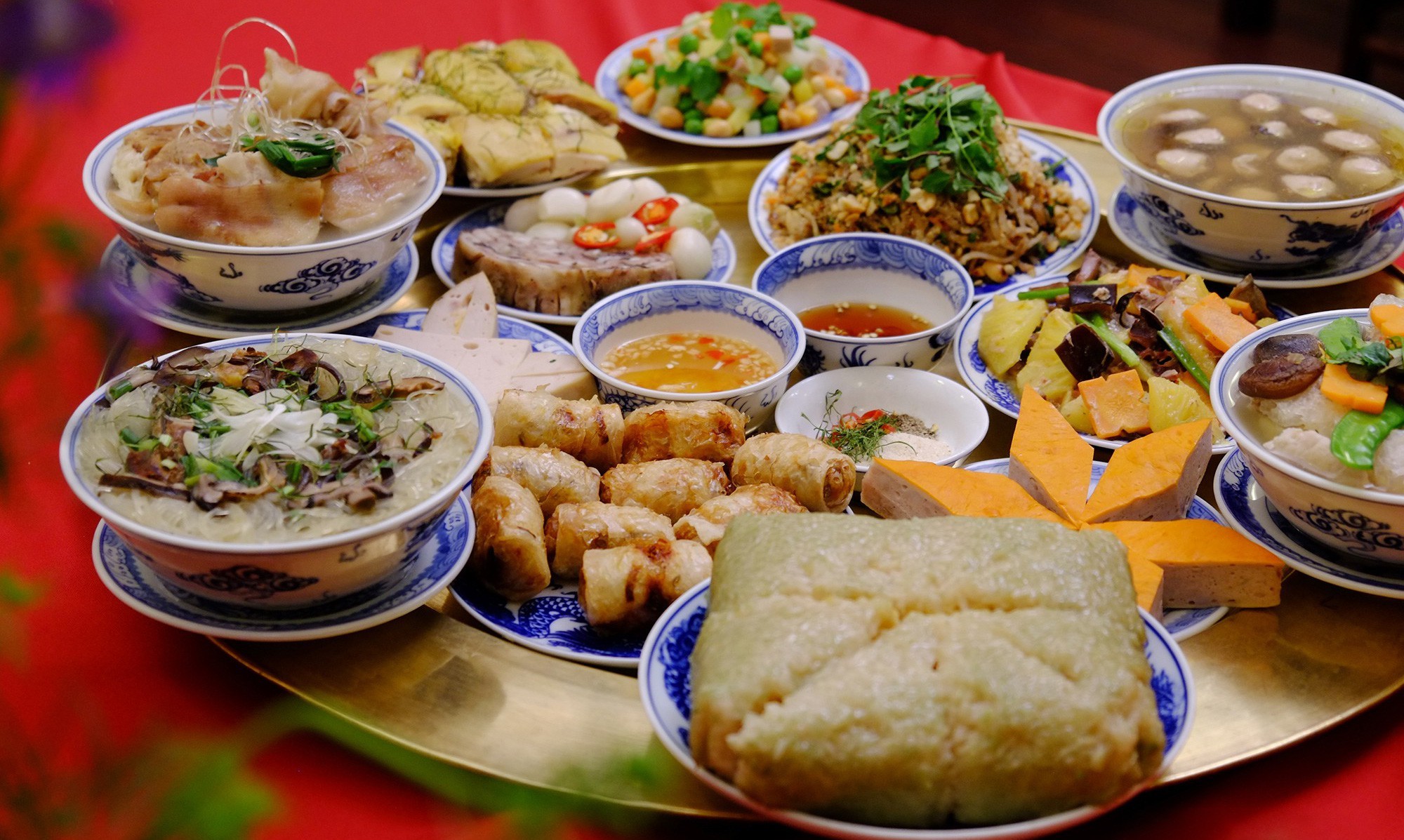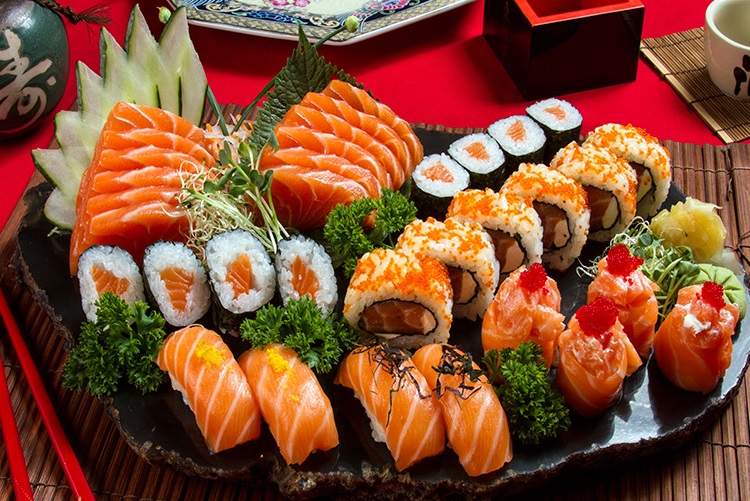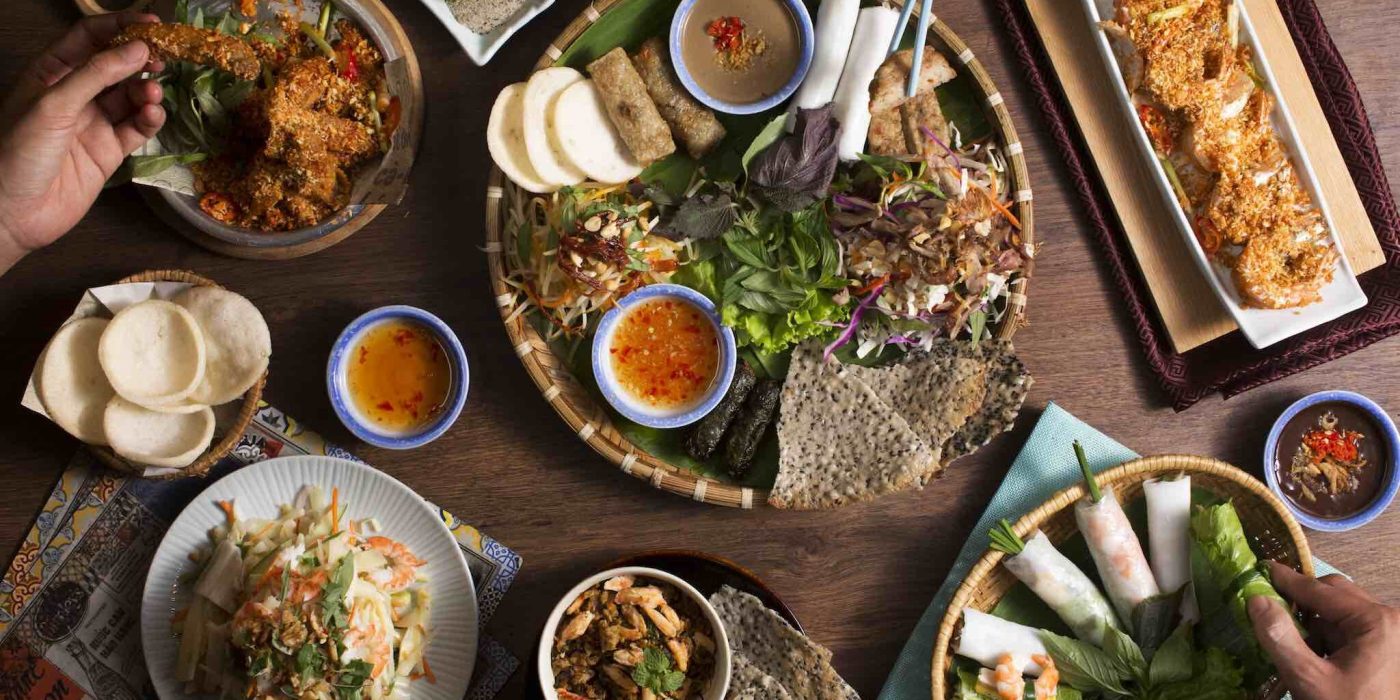No products in the cart.
Blog
Khám Phá ẩm Thực Nhật Bản: Từ Chợ Truyền Thống đến Bàn ăn
[

Khám Phá Ẩm Thực Nhật Bản: Từ Chợ Truyền Thống đến Bàn Ăn

Introduction:

Japan, a land of ancient traditions and modern marvels, offers a culinary journey unlike any other. From bustling fish markets overflowing with the freshest seafood to serene tea ceremonies steeped in history, Japanese food is more than just sustenance; it’s an art form, a cultural expression, and a celebration of nature’s bounty. This exploration delves into the heart of Japanese cuisine, guiding you from the vibrant energy of traditional markets to the refined elegance of a formal dining experience. Prepare to be tantalized by the diversity, freshness, and subtlety that defines Japanese gastronomy.
Thế Giới Cá & Hải Sản: Tinh Hoa Biển Khơi
Japan’s relationship with the sea is intimate and profound. Seafood forms the backbone of many traditional dishes, and the quality and freshness are paramount. Understanding this relationship unlocks a deeper appreciation for the country’s culinary heritage.
Sushi & Sashimi: The epitome of Japanese seafood cuisine. Sushi involves vinegared rice, while sashimi consists of raw fish slices. Quality fish is key; look for glistening cuts with a firm texture.
Tempura: Lightly battered and deep-fried seafood, vegetables, or both. The secret lies in the light batter and the precise frying technique, resulting in a crisp exterior and tender interior.
Kaiseki: A multi-course haute cuisine meal showcasing seasonal ingredients, often including exquisite seafood preparations. Expect artistic presentation and refined flavors.
Seafood Markets (Tsukiji): Visiting a bustling fish market like Tsukiji (or Toyosu) is an essential experience. Witness the auction, browse the stalls, and sample fresh seafood.
Uni (Sea Urchin): A delicacy often served raw, uni’s buttery texture and briny sweetness are unparalleled. Only the highest quality uni is used in premium dishes.
Oysters: Abundant and diverse across Japan, oysters are enjoyed fresh, grilled, or incorporated into various dishes. Each region boasts its unique varieties.
Mì Nhật Bản: Từ Ramen đến Soba
Noodles are a staple in the Japanese diet, taking many forms and representing diverse regional styles. Exploring the noodle world is a delicious adventure into Japanese culinary diversity.
Ramen: A rich, flavorful broth (tonkotsu, shoyu, miso are popular) featuring noodles, toppings (chashu pork, egg, bamboo shoots), and often a spicy kick. Regional variations abound.
Soba: Buckwheat noodles, served both hot and cold, often with a simple broth or dipping sauce. Known for their subtly nutty flavor and satisfying texture.
Udon: Thick wheat flour noodles, often served in a savory broth with ingredients like tempura, vegetables, and meat. Provides a hearty and comforting meal.
Somen: Thin wheat flour noodles, typically served cold with a refreshing dipping sauce. Perfect for hot summer days.
Tsukemen: Dipping ramen, where the noodles are eaten separately from the rich, flavorful broth. This allows for greater control of the flavor intensity.
Yakisoba: Stir-fried noodles often with meat, vegetables, and a savory sauce. A popular street food and casual meal option.
Sự quyến rũ của cơm Nhật: Từ Bento đến cơm nắm Onigiri
Rice is the foundation of the Japanese diet, playing a central role in countless dishes. Its versatility and subtle sweetness make it a perfect canvas for a variety of flavors.
Sushi Rice: Short-grain Japanese rice, seasoned with rice vinegar, sugar, and salt. Its slightly sticky texture is essential for sushi.
Bento Boxes: Beautifully arranged lunch boxes containing a variety of dishes, often showcasing artistry and balance. A testament to Japanese attention to detail.
Onigiri (Rice Balls): Simple yet satisfying, onigiri are rice balls filled with various ingredients, such as pickled plums (umeboshi), tuna mayo, or seaweed.
Ochazuke: A comforting and simple dish of rice topped with hot green tea and various ingredients like pickles, seafood, or seaweed. Perfect for a quick and easy meal.
Gyudon: Beef bowl with simmered beef, onions, and a sweet and savory sauce, served over rice. A popular comfort food.
Omurice: A delicious and fun dish of fried rice topped with a fluffy omelet. Often served with ketchup for a sweet and tangy flavor.
Món ăn truyền thống: Từ Wagashi đến Yakitori
Beyond the everyday, Japanese cuisine boasts a rich tradition of special dishes and sweets, reflecting seasonal changes and cultural significance.
Wagashi (Japanese Sweets): Delicate and aesthetically pleasing sweets often made with mochi, red bean paste (anko), and seasonal ingredients. They are a crucial part of traditional tea ceremonies.
Tempura: Although mentioned earlier for seafood, Tempura also includes an array of vegetables, prepared using the same technique.
Yakitori: Grilled chicken skewers, marinated in a savory sauce. A popular street food and izakaya (Japanese pub) staple.
Okonomiyaki: Savory pancake made with flour, cabbage, and various toppings, cooked on a hot plate. A regional specialty with many variations.
Takoyaki: Ball-shaped snacks made from wheat flour batter and filled with octopus, tempura scraps, and other ingredients. A fun and flavorful street food.
Shabu-Shabu: A hot pot dish where thinly sliced meat and vegetables are cooked in boiling broth at the table. A communal and interactive dining experience.
Trà đạo Nhật Bản: Nghệ thuật thưởng thức trà
Tea is integral to Japanese culture, encompassing more than just a beverage. The tea ceremony (chado) is a ritualistic practice steeped in tradition, emphasizing mindfulness and harmony.
Matcha: Finely ground green tea powder, used in traditional tea ceremonies and various desserts and drinks. Its vibrant green color and earthy flavor are distinctive.
Sencha: Steamed green tea, known for its refreshing taste and subtle sweetness. A popular everyday tea.
Gyokuro: Shade-grown green tea, resulting in a richer, sweeter flavor. Prized for its umami notes.
Hojicha: Roasted green tea, offering a unique nutty and slightly sweet flavor. A more accessible and less bitter green tea option.
Tea Ceremony Etiquette: Learning the basic etiquette of a traditional tea ceremony enhances the experience and shows respect for the tradition.
Tea Ware: Appreciating the artistry and craftsmanship of traditional Japanese teaware adds another layer to tea appreciation.
| Category | Dish | Description | Key Ingredient(s) |
|---|---|---|---|
| Seafood | Sushi | Vinegared rice topped with raw fish, vegetables, or eggs. | Rice, Fish, Vegetables |
| Noodles | Ramen | Noodle soup with rich broth, noodles, and various toppings. | Noodles, Broth, Toppings |
| Rice Dishes | Onigiri | Rice balls filled with various ingredients. | Rice, Fillings |
| Traditional Dishes | Wagashi | Traditional Japanese sweets, often made with mochi and red bean paste. | Mochi, Anko, Seasonal Fruits |
| Drinks | Matcha | Finely ground green tea powder used in traditional tea ceremonies and desserts. | Green Tea |
Conclusion:
This exploration merely scratches the surface of the vast and multifaceted world of Japanese cuisine. From the vibrant chaos of the fish markets to the serene elegance of a traditional tea ceremony, each encounter offers a unique perspective on Japanese culture and its deeply ingrained appreciation for quality ingredients, skillful preparation, and the art of presentation. By venturing beyond the familiar and embracing the diverse flavors and traditions, you unlock a truly rewarding and unforgettable culinary journey. Remember that engaging with Japanese food is about more than just eating; it’s about experiencing a culture, appreciating its history, and savoring the subtlety and beauty found in every bite.
Keywords: Japanese Cuisine, Japanese Food, Seafood, Ramen, Sushi
]


Bài viết hay quá! Tôi thích cách tác giả miêu tả chợ truyền thống, sinh động lắm! Đọc xong muốn đặt vé đi Nhật ngay và luôn!!
Thật sự là bài viết rất sơ sài, thiếu nhiều thông tin quan trọng về ẩm thực Nhật Bản. Chỉ nói qua loa, không có chiều sâu gì cả.
Thêm thông tin về các món ăn chay Nhật Bản nha. Tôi thấy bài viết tập trung vào các món ăn có thịt quá.
Tôi không đồng ý với quan điểm của tác giả về sushi. Sushi không chỉ đơn giản là cá sống với cơm thôi đâu, nó là cả một nghệ thuật! Tác giả viết thiếu hiểu biết quá.
À há, khám phá ẩm thực Nhật Bản à? Đọc xong bài viết này, tôi vẫn đói. Tuyệt vời!
Bài viết hay thật đấy! Tuyệt vời! (nhưng mà hình như tác giả nhầm lẫn giữa Ramen và Udon rồi thì phải? Thôi kệ, vẫn hay!)
Haha, đọc bài viết mà tôi tưởng tượng ra mình đang ngồi ở một nhà hàng Nhật Bản, nghe mùi thơm phức của các món ăn. Tuyệt cú mèo!
Bài viết này cung cấp cái nhìn tổng quan kha khá về ẩm thực Nhật. Tuy nhiên, nên bổ sung thêm hình ảnh minh họa cho sinh động hơn. Một số chỗ viết hơi lan man, cần mạch lạc hơn.
Ôi chao, bài viết hay ghê, đọc xong thấy thèm đồ ăn Nhật quá trời luôn! Cảm ơn tác giả nha! Tuyệt vời!! Rất bổ ích!